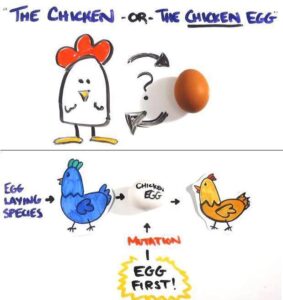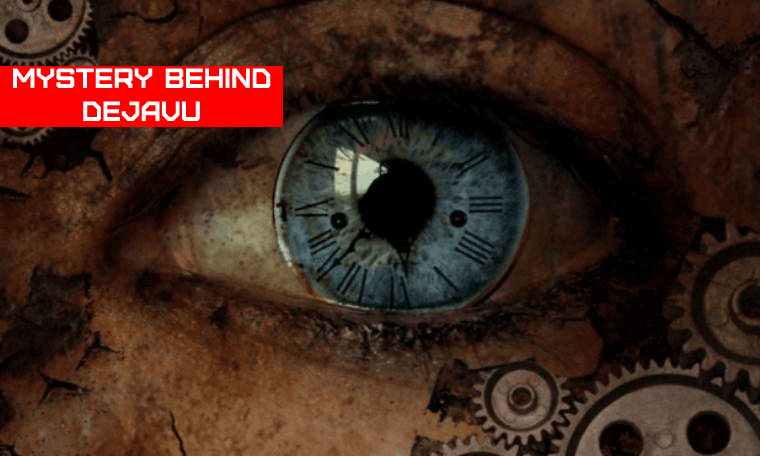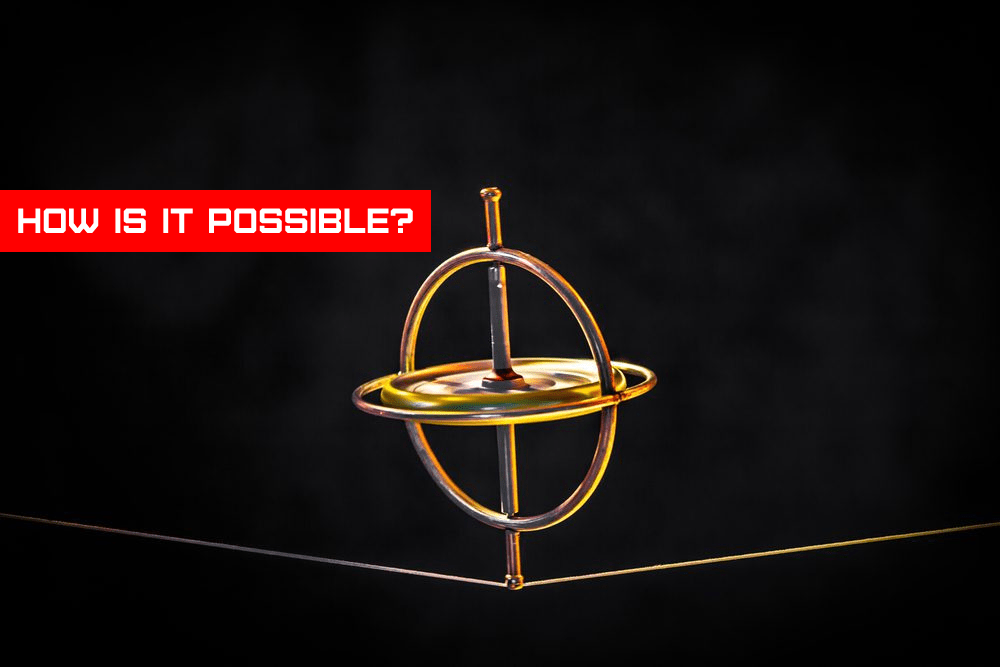What is the universe made of? What happened before there was a universe? How can we be sure we exist in the real world and not inside a computer simulation?
Science has long been asking difficult questions, exploring the furthest depths of the cosmos and probing the tiniest bits of matter for the answers- yet no question is more important, or more confounding to all humanity than the classic conundrum:
Which came first, the chicken or the egg?
At first view the question is a logic circle, meaning that it has no real answer because one perpetually comes before the other which perpetually comes before that which came before it. Did we lose you there? It’s like this- they both became before each other, because a chicken came from an egg which came from a chicken which came from an egg, etc. etc. into eternity.
It’s the kind of question with no real answer, and one that might send the very first militarized AI into a logical kineption fit and kill us all. Evolution though does tell us that one of these things had to in fact come before the other, and if we boil the question down to its most basic elements, that is a chicken and an egg, then it’s obvious that the egg came before the chicken.
Life first evolved on earth 2 billion years ago, yet for about 1.5 billion of those years, life remained in the single and multicellular stage, not getting much more complex than say, amoebas. The first things we would recognize as true animals were sponges and jellyfish, which arose between 500 million and 600 million years ago, and these were likely not individual animals but rather colonies of smaller organisms such as clonal colonies, or masses of simple organisms all having a single ‘parent’ they are cloned from.
Then suddenly, for a reason science is still unclear on, animal life exploded in complexity and we get the Cambrian explosion, which brought with it all the major animal phyla of today. Animals became individuals, grew tissues, appendages, and to be honest, evolution got downright weird with it. But that’s what happens in a new environment with new life, evolution has all kinds of room to expand until by natural selection, the evolutionary paths an animal can take get narrowed down.
That’s the reason we don’t have six arms and large land animals all have four limbs- four turned out to be the optimal number and any three or six armed descendants we may have had got outcompeted by four limb animals. But the fun thing about evolution is that it’s going to be different anywhere you go, so there could very well be a planet with conditions that for some reason prefer six-armed life. At some point though animals needed to protect their young, and it turns out that ejecting masses of living tissue into the environment to fend for itself wasn’t quite working out.
So animals began to slowly evolve protective layers around their undeveloped young, and those who did flourished while those who didn’t died off. In case you’re wondering, mammals traded egg laying for the ability to carry their young to term inside their bodies, and some believe that it was predatory pressure by dinosaurs that actually developed this behavior.
About 230 million years ago a group of dinosaurs known as theropods flourished on earth, and it’s from these dinos that we would get the mighty T. rex, and the humble chicken of today. Today we eat chicken on a daily basis, and think nothing of rolling the meat of dead chickens in the yolk of their unborn children before tossing them into a fryer for a delicious snack, but seventy million years ago a chicken’s ancestors would’ve made you into a meal with one bite. Fifty million years ago though we have wild jungle birds roaming through the tropical forests of southeast asia, and just a few million years after that we get what we would consider the first true chicken.
So thanks to evolution, we know that the egg definitely came before the chicken. Over time those genetic mutations were passed down and reinforced by a growing pool of bird-mutants with the same genetic quirks, and after a whole lot of mommy birds loving daddy birds, we get a full-blown chicken. The real question though isn’t if the chicken or the egg came first, as any evolutionary biologist would be able to easily answer it just like we did- though definitely in a far less entertaining manner.
For science, the real question is which came first: egg-laying dinosaurs or the egg? Sadly investigating our own ancient past is not easy. With so many geologic changes and catastrophes from comet and asteroid strikes to super volcano explosions and mega-tsunamis, plus regular weathering of the environment, trying to learn about the earth’s ancient history has been described as watching a movie where most of the frames are missing.
It’s impossible to ever see the full film, but you can hopefully gather enough of those missing frames to understand the cliffnotes of what happened. Science has been pretty good about doing just that, though some scientists estimate that we are likely unaware of about 98% of even large animals that ever existed. Was there a more bad-ass dinosaur than the T-rex? Well, yes, there was, and it was called the Spinosaurus, but was there an even more bad-ass dinosaur than the Spino? There very well could have been, but all geologic evidence of its presence has simply been lost to time.
We might never know the answer to when egg-laying dinosaurs first appeared, but the discovery of a nest of preserved dinosaur eggs is helping scientists piece together some of the clues. Originally discovered in the 90s and mislabeled as belonging to a large duck-billed dinosaur, new examination of the nest has revealed that they belonged to a group of meat-eating theropods that lived about 150 million years ago.

This would make it one of the earliest nests ever discovered, and it just so happens to be from the line of dinosaurs that today’s chicken would come from. What’s even more exciting about these eggs is that they were pointed at one end, much like most modern bird eggs. Each egg is about five inches (12 cm) long and its believed the nest contained twelve of them, with the mother sitting on top and protecting her clutch with her body.
The mother also likely laid her eggs two at a time, unlike crocodiles which lay their eggs all at once and more like birds who do it one at a time, an even stronger link with today’s chicken. While we can learn a lot about dinosaur behavior by studying fossils such as this nest, the only real way of discovering our prehistoric past will likely be to resurrect these animals with genetic engineering.
That might sound crazy, but in fact scientists recently reverted an embryonic chicken into its dinosaur past by replacing its beak with a bonafide dino-like snout. Far from a dinosaur, even this small feat took seven years of trial and error experimentation to discover which genes did what, and cross-referencing with study of turtle and other lizard embryos as they grew. Incredibly though, not only did this chicken have a dinosaur mouth, but it had features that were last seen in its ancestors tens of millions of years ago.
Our path is clear then if we want to find an answer to the age old question: which came first, the chicken or the egg. We must resurrect dinosaurs, stick them in an amusement park, and then watch as they inevitably eat all the guests when the slightest security misstep happens. Some might call it unethical, but knowledge is only for the bold. Should we bring back a dinosaur or should we leave extinct animals alone?
Eggs probably predated chickens, but chicken eggs did not—the two are inextricably linked. If we had to pick a side, we’d go with Team Egg based on the evolutionary data.









